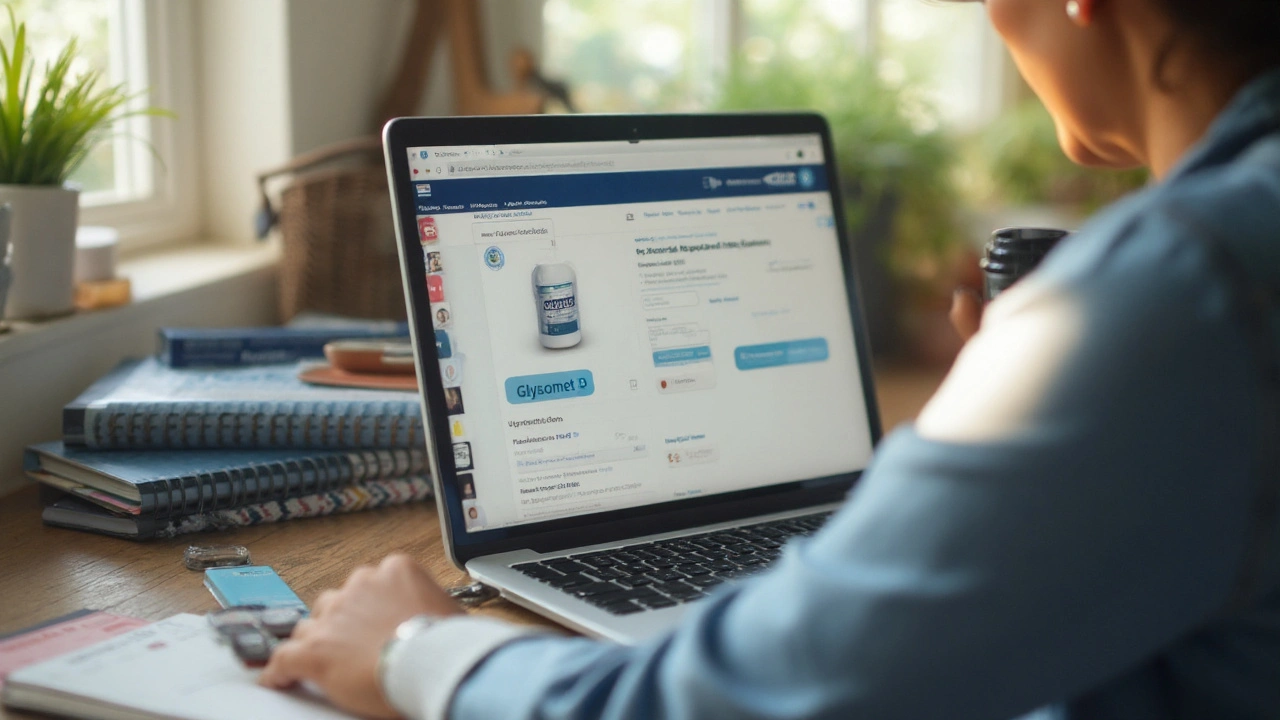Prescription Metformin: What It Is, How to Use It, and Where to Get It Safely
Metformin is the most common drug used to control blood sugar in type 2 diabetes. If your doctor prescribed it, you already know it can lower glucose without causing big weight gain. But many people still wonder how it works, what dose to take, and where they can fill the prescription without hassle.
How Metformin Works and Who Should Take It
Metformin belongs to a class called biguanides. It mainly stops the liver from making extra sugar and helps your muscles use glucose better. Because it doesn’t boost insulin, the risk of low blood sugar (hypoglycemia) is low unless you combine it with other diabetics meds.
Typical candidates are adults with type 2 diabetes, especially those who are overweight or have a history of heart disease. Occasionally doctors use it for polycystic ovary syndrome (PCOS) because it can improve hormone balance and menstrual regularity.
Dosage, Side Effects, and Interactions
Most people start with 500 mg once a day, taken with dinner to reduce stomach upset. The dose can be increased every week by 500 mg until the usual maintenance range of 1500‑2000 mg per day is reached. Extended‑release tablets let you take the full dose once daily and often cause fewer GI issues.
The most common side effects are nausea, diarrhea, and a metallic taste. These usually fade after a few weeks. If you notice persistent stomach pain or vomiting, talk to your doctor – they may switch you to the extended‑release form or suggest taking the drug with meals.
Metformin can interact with contrast dye used in imaging tests, increasing the risk of a rare condition called lactic acidosis. Always let the radiology team know you’re on metformin, and your doctor may pause the medication for a day or two before and after the test. Other drugs that can raise metformin levels include certain diuretics, steroids, and birth‑control pills.
Kidney function matters a lot. If your eGFR (estimated glomerular filtration rate) drops below 30 ml/min, metformin is usually stopped because the kidneys can’t clear it properly.
Now, where do you get a prescription filled? In New Zealand and many other countries, you can order metformin from licensed online pharmacies that require a valid prescription. Look for a website that shows a physical address, a pharmacy registration number, and clear privacy policies. Avoid sites that sell “no‑prescription” metformin or ask for payment before confirming your doctor’s order.
If you need a new prescription, many telehealth services let you speak with a clinician, get a digital prescription, and have it sent directly to a verified pharmacy. The process usually takes a day, and you can track delivery just like any other package.
Always keep a copy of your prescription and the pharmacy’s receipt. If you ever notice a change in your blood sugar readings after starting metformin, contact your healthcare provider right away. Regular check‑ups and lab tests will help you stay on the right dose and spot any side effects early.
In short, metformin is a safe, effective cornerstone for managing type 2 diabetes when taken as directed. Understanding how it works, the right dosage, and how to order it safely online can keep you in control of your health without unnecessary headaches.
How and Where to Buy Glycomet Online Safely (NZ Guide 2025)
Safe, legal ways to buy Glycomet (metformin) online in New Zealand. What to expect on price, prescriptions, delivery, risks, and the best alternatives in 2025.
Read more